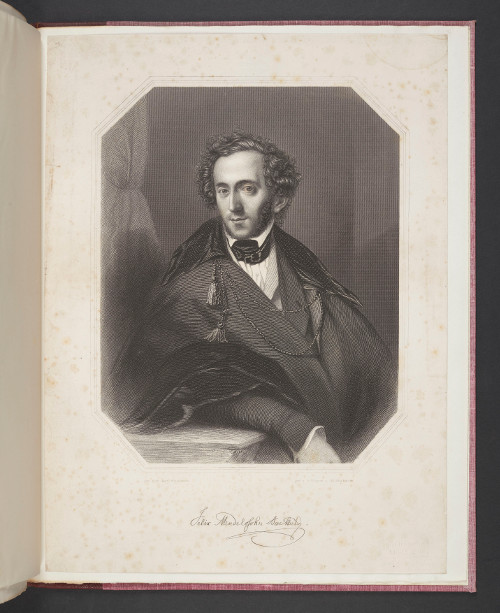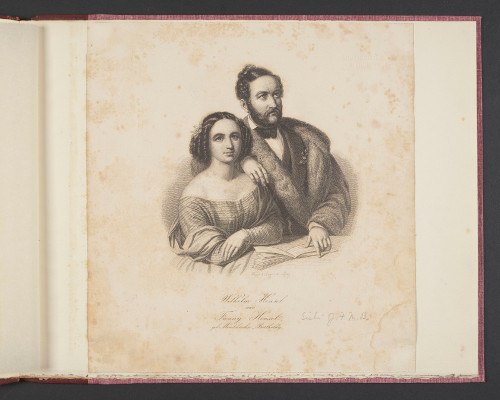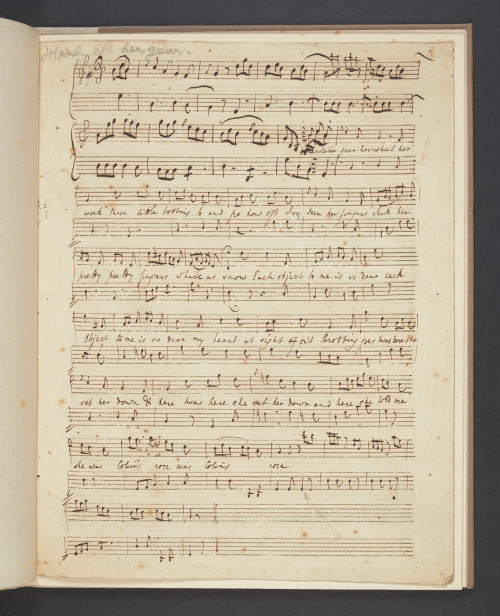Archives Hub feature for February 2019
A new exhibition at the Treasures of the Brotherton Gallery at the University of Leeds explores the story of a forgotten Yorkshireman whose achievements are now being reassessed.
Dr Bryan White, Senior Lecturer in the School of Music at the University of Leeds, has been researching the material collected by the Sheffield-based organist, antiquarian and collector William Thomas Freemantle (1849-1931). Dr White’s investigations have revealed a tenacious collector who would “endure martyrdom in Siberia” to acquire unique treasures for his library.

W.T. Freemantle’s musical interests extended widely and he gathered a valuable collection of manuscripts and prints. Much of this material has only recently been catalogued, and more still remains to be explored.
“W.T.” was born in Chichester and moved with his family to Sheffield in 1855. At the age of 16 he was apprenticed organist at Lincoln Cathedral and developed an interest in the music of Felix Mendelssohn (1809-1847).

Freemantle’s enthusiasm for Mendelssohn ran against the tide. At the mid-point of the nineteenth century the composer was a towering figure in the musical landscape, particularly in Britain. Mendelssohn’s reputation waned in subsequent decades, but Freemantle continued to value his music highly. Today Mendelssohn is again one of the most popular Romantic composers, and Freemantle’s collection has much to offer the researcher.
Freemantle described his metamorphosis into a collector in a lecture entitled “How I became an autograph collector and what I have got”. He tells of a visit to a Sheffield market where he stumbled upon a “rather soiled looking lot of manuscript music”. As he worked through the pile he found a Mendelssohn signature and felt “my blood had heated, my pulse had quickened” … “Oh! That bundle of music! I was now indeed an autograph collector.”

Several decades later his Mendelssohn collection encompassed 40 autograph manuscript scores, 300 letters, and hundreds of books, musical prints, concert programmes and other ephemera touching upon all aspects of the composer’s life and that of his family and colleagues. In the 1870s Freemantle began a biography of the composer, but eventually put the project aside when the extent of the surviving material overwhelmed him.

Freemantle collected music by other significant figures, and in particular committed himself to the music of Charles Dibdin (1745-1814), a prolific composer of theatre music and songs. Freemantle acquired a substantial set of Dibdin’s autograph manuscripts, working with great skill and dedication to organise and identify this very disordered material.

W.T. also took a strong interest in Sheffield history. He acquired books, pottery, painting, prints and tokens from the local area and wrote and lectured on local history. His collection of Rockingham pottery was eventually bought by the Sheffield Corporation and now resides at Weston Park Museum along with his collection of coins and seals.
Freemantle sold his Mendelssohn collection along with his entire library to Lord Brotherton of Wakefield sometime in 1927-28. The purchase was probably brokered by Brotherton’s personal librarian, J. Alexander Symington (1887-1961). Symington had oversight of the Freemantle Collection before it was formally accessioned by the University Library in Leeds, and he took the opportunity to sell significant parts of the Mendelssohn and Dibdin material to libraries and collectors in the United States. His actions played a significant role in suppressing the extent of Freemantle’s activities and his reputation as a collector.

Had Freemantle’s music collections remained intact he would be recognised as a pioneering figure in Mendelssohn studies, and more widely as a significant British collector of his era. Thankfully, the rest of Freemantle’s materials were left untouched and now form an important part of Special Collections at the University of Leeds. Now that Freemantle’s work is being reassessed, the real story of his achievements can begin to be told!
The exhibition runs from 1 March-31 July 2019 in the Treasures of the Brotherton Gallery at the University of Leeds.
On show for the first time to the general public are many of the Mendelssohn manuscript scores housed in Special Collections at Leeds University Library, alongside other items from Freemantle’s extensive music collections.
The Treasures of the Brotherton Gallery is free and open to all. For directions, opening times and our programme of related events see:
https://library.leeds.ac.uk/galleries
Get all the latest news and behind the scenes insights by following the Gallery on Facebook, Instagram and Twitter – @LULGalleries
Special Collections at Leeds University Library is home to hundreds of thousands of rare books, manuscripts, archives and artworks. Our collections offer a rich resource for staff, students, and the wider research community. Start your search here:
https://library.leeds.ac.uk/special-collections
Dr Bryan White
Senior Lecturer, School of Music, University of Leeds
Rhiannon Lawrence-Francis
Collections and Engagement Manager, Special Collections, University of Leeds
Related
Miscellaneous papers collected by W.T. Freemantle, ca.1775-ca.1925
Browse all University of Leeds Special Collections descriptions on the Archives Hub.
The Mendelssohn papers, mid-18th-19th century (held by the Bodleian Library, University of Oxford)
Previous features on the University of Leeds Special Collections:
Sentimental Journey: a focus on travel in the archives
All images copyright University of Leeds Special Collections and reproduced with the kind permission of the copyright holders.
